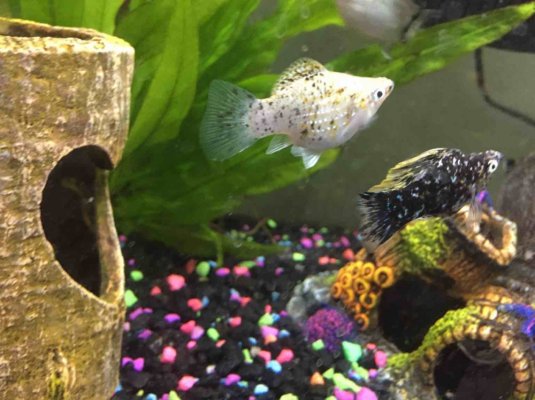So at least one of my two pregnant black mollies dropped a few fry about a week ago (both still looking very square though) and the seven I’ve saved are in a separate tank. My question is though, both females were bred by the same silver male, and yet all seven fry are orange/ pale yellow and I was wondering how that might be? They haven’t had any other contact with any other males, around 2 months ago one of them also dropped fry that were again all orange.. unfortunately the breeder box they were in ended up tipped over at 2-3 weeks old and they were eaten [emoji51] Anyways, I’m familiar with punnet squares and predicting the traits and colors, I’m just confused as to how these black females seem to only have orange fry when they haven’t been around any males at all for about 6 months before the first fry drop and then were introduced to the silver male.. are molly fry just born orange and then change colors? Or am I missing something in my calculations and there’s some really strong orange genes in both parents that just aren’t visible?
Probably seems like a bad question but I’m new to live bearers, I’ve mostly bred cichlids and watched them develop more color as they got from wigglers to free swimming fry, and like I said before, the first round of fry from the black female were also orange, all the way up to when they were eaten around 2 or 3 weeks old..
Thanks in advance for the opinions [emoji4]
Probably seems like a bad question but I’m new to live bearers, I’ve mostly bred cichlids and watched them develop more color as they got from wigglers to free swimming fry, and like I said before, the first round of fry from the black female were also orange, all the way up to when they were eaten around 2 or 3 weeks old..
Thanks in advance for the opinions [emoji4]

